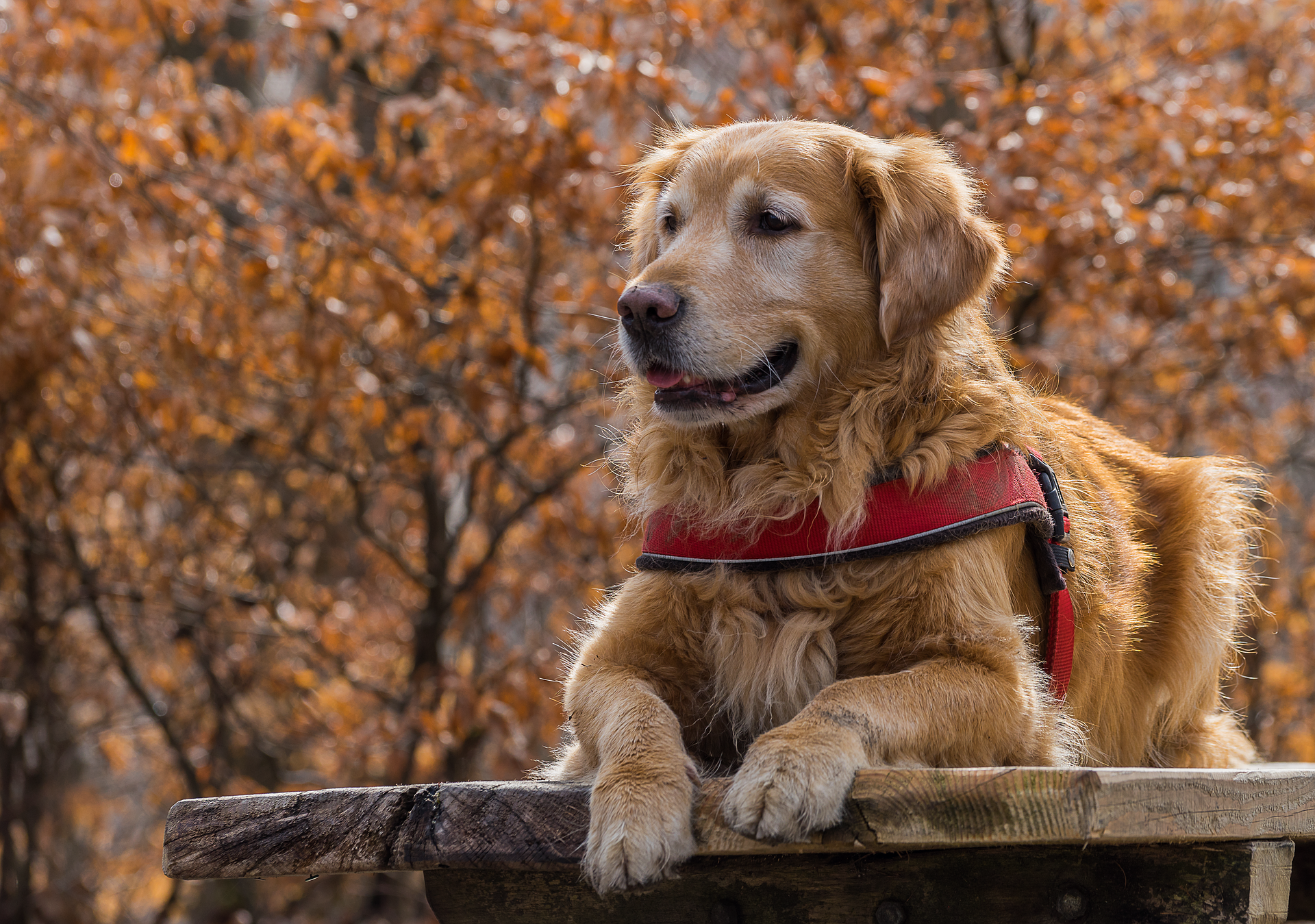
Autumn Pet Care
Posted by Grange Co-op on 13th Sep 2022
Fall will be here before you know it, giving us all some relief from hot temperatures and summer pests. Although cooler temperatures will make it easier to enjoy the outdoors, it’s important to provide the autumn pet care your dog or cat needs to stay healthy, comfortable, and safe.
Fall Pet Safety Tips

1. Keep Them Warm and Cozy
Depending on your location, the temperatures might drop significantly during the fall months. Keep your pet warm by providing them with the appropriate clothing whenever you go outdoors. A good rule of thumb is that your pet needs an extra layer of clothing when you do.
The same is true for indoors. Make sure your pet has a warm bed to keep them cozy when the temperatures drop. This is especially important for seniors or ill pets that need the warmth and support of a well-made bed.
2. Increase Their Grooming
Before the onset of fall, your pet will begin growing its winter coat. Be prepared to perform more grooming and choose the right type of dog brush for the breed. In addition, use a de-shedding tool to help dogs or cats shed their summer coats.
It would be best if you also gave special attention to your dog’s paws after lots of time walking and running outdoors. Check for dry, cracked paw pads and nails and apply a healing salve. Look for irritation or rashes on their skin. Your dog might be experiencing allergies in response to the season change. As a result, you might need to bathe your dog more frequently. Use shampoo that is infused with aloe to soothe itchy, irritated skin.
3. Continue Flea and Tick Protection
Pet owners often slack off from using flea and tick protection once the weather gets cooler, especially if their cats or dogs spend most of their time indoors. While these parasites are typically in larger populations during the summer, they continue to threaten pet health year-round.
Many flea and tick treatments only last for one month before requiring additional treatment. At most, one treatment will last for three months. Make sure you repeat the treatment as recommended, even when temperatures drop. Also, use the right products for dogs or cats. Also, choose the right product for your pet’s size, age, and weight.
4. Adjust Their Feed
Do you know how you like to snuggle up during cold weather and eat too much comfort food? It isn’t unusual for any of us to put on a few pounds during cold weather. The same thing can lead to weight gain in your dog. There are fewer hours of daylight, and you’re less likely to take your dog outdoors for exercise. As a result, they burn fewer calories, and their metabolism slows down during colder weather. It’s normal for dogs to begin storing more fat once the days become shorter. That means you need to cut back on the amount of feed you give them during the winter.
The situation is a lot different for dogs that normally stay outdoors in all kinds of weather. A dog that is acclimated to cold temperatures has an altered metabolism. As a result, outdoor dogs might need double or even triple the number of calories they consume during warmer weather. You might also need to switch them to dog food with higher fat content.
Dog food with a 10 to 15 percent fat content is recommended to maintain pet health. For outdoor dogs, look for a good-quality dog food that contains a higher percentage of fat and includes omega-3 and omega-6 fatty acids for balanced nutrition.
For indoor dogs, you can simply reduce the amount of feed offered by 10%. If you normally give your dog a lot of treats, cutting back on those is a good place to start. If your dog is already on the heavy side, consider switching to a weight loss dog food that maintains nutrient requirements while reducing calorie intake.
What about cats? You should use the same strategy for feeding outdoor cats during cooler weather that you do for dogs. Give them more food with a higher fat content once fall arrives. One difference between the two species is that indoor cats have the same metabolic response as those that stay outdoors. They get sun through the windows so that they experience an increase in appetite rather than a decrease. So, make feeding cats more a part of your routine autumn pet care.
5. Keep Them Away From Halloween Candy
First comes fall, and Halloween isn’t far behind. Don’t forget the hazards that candy such as chocolate presents to pets. Although most dog owners realize the risks associated with chocolate, it’s also a problem when cats ingest chocolate of any kind. In addition, there are other foods to avoid that you might not realize are toxic to pets. Remember these ingredients when you’re purchasing sweets to enjoy during Halloween.
Macadamia nuts have shown problems in dogs, while both raisins and grapes are shown to cause kidney damage. Any food sweetened with Xylitol artificial sweetener is also dangerous. It can cause a life-threatening drop in your pet’s blood sugar. Therefore, it’s better to avoid giving your pet any sugar-free candy. Finally, avoid treats with nuts and nutmeg in them. Both of these ingredients can endanger pet health. Instead, keep some treats on hand that are made specifically for your pet and keep the human sweets out of reach.
Get Ready for Autumn Pet Care at Grange Co-op
At Grange Co-op, we offer a wide range of items to help you follow these fall pet safety tips and more. Contact us to discuss the products you need to get your dog, cat, or other pet ready for cooler weather.
